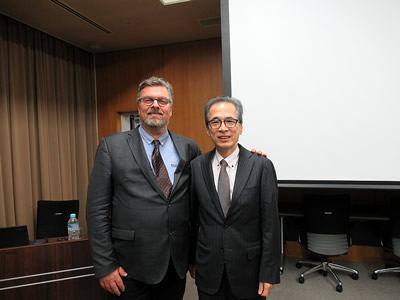Diagnosis and management of a short child born small for gestational age (SGA)
Small for gestational age (SGA) is commonly defined as birth weight and birth length that is at least two standard deviation scores (SDS) below the mean for gestational age. Infants born SGA can be full term or preterm and may or may not have experienced severe intrauterine growth retardation. Although the majority of children born SGA achieve catch-up growth in height, 5-10 % of infants do not catch up and remain short into adult life. These children born SGA who do not show catch-up growth will be eligible for GH therapy.
The approved minimum age for treatment is 2 yr in USA, 4 yr in Europe, and 3 yr in Japan. However, the mean age when GH therapy is initiated in Switzerland, France, Germany, and UK is about 7-8 yr. Because the age at start of the GH treatment is one of the factors associated with GH response, early assessment and initiation are desirable to obtain good responses. It was reported that 20-50% of infants treated with GH showed poor response. Endocrinological markers which predict good GH responses include the low baseline IGF-1 levels and the extent of the elevation in IGF-1 values after the initiation of GH therapy. North European Small-for-Gestational-Age Study (NESGAS) demonstrated that titration of GH dose in SGA children according to their total IGF-1 concentration resulted in low doses of GH and a low growth response. Therefore, it is difficult to titrate GH dose by IGF-1 in children with SGA and the optimal GH dose in short children born SGA is currently under debate.
It is recommended that serum IGF-1 concentrations are kept within the normal reference range. However, some children born SGA experience supra-normal IGF-1 concentrations during GH therapy. In the bloodstream, the majority of IGF-1 bound to IGF-binding proteins and approximately 1% of all IGF-1 have bioactivity. Actually, the concentrations of bioactive IGF-1 were within the normal range in the majority of SGA children treated with GH despite they have elevated IGF-1 concentrations. Therefore, elevated and even supranormal total IGF-1 concentrations during GH treatment do not result in elevated bioactive IGF-1 levels.
There are several studies which verify the effect of long-term GH treatment in short children born SGA. Some studies have documented that GH treatment in short children born SGA improves final height. On the other hand, there might be an increased risk for diabetes mellitus type 2 and cardiovascular disease in children born SGA and long-term safety and mortality in patients treated with GH during childhood is an ongoing concern. One study demonstrated that insulin resistance that was induced by the use of GH was reversed after cessation of treatment and another study proved that long-term GH treatment had no unfavorable effects on cardiovascular of metabolic health in early adulthood. Taken together, GH treatment can be administered in clinical practice in children born SGA. @
i¶ÓFªqÆj
